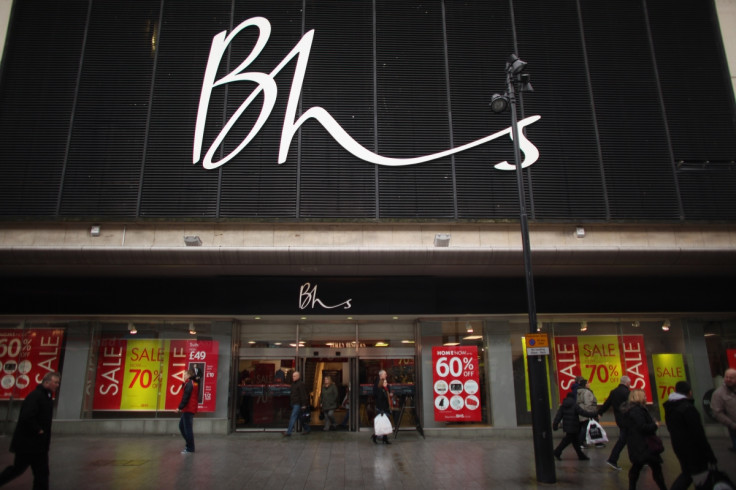BHS enters administration: A timeline of high-street retailer's 88-year history

British high-street retailer BHS has confirmed it will enter administration later on Monday (25 April) after failing to secure a last-minute deal to stay afloat.
Talks to sell some of the group's 164 stores to Sports Direct collapsed over the weekend and it is understood any buyer would only consider a purchase if it did not have to assume responsibility for the chain's £571m ($822m) pensions deficit.
The group, which has reported trading losses for seven years totalling £415m, employs 11,000 people across the UK, who have all been told they will receive their salary this month.
Analysts believe the company's demise was partly due to an outdated shopping offer and a strategy that failed to prevent the 88-year-old company slipping behind its rivals.
"The problem is their trading offer is in the 1980s," said Phil Dorrell, partner at the consultancy Retail Remedy. "Their stores look a bit dated. They are behind the times."
Below is BHS' slide into administration;
1928 - The company is set up by a group of American entrepreneurs who aim to create a British version of Woolworths. A first general store is opened in Brixton and nothing costs more than a shilling (5p). That, however, changes the following year as the company moves into home furnishings.
1933 - BHS is listed on the London Stock Exchange.
1970 - The retailer, which has grown rapidly in the post-war decades employs 12,000 people across 94 stores in the UK and is firmly established as one of the main high-street brands in the country.
1977 - BHS and Sainsbury's create SavaCentre hypermarkets, with the first shop opening in Washington, Tyne and Wear.
1982 - The retailer's stores undergo a drastic refit, as BHS ditches supermarket-style rows for a layout more similar to a department store.
1985 - BHS begins to franchise its brand to stores across the world, which sell BHS products.
1986 - The group merges with Mothercare and Sir Terence Conran's Habitat to become Storehouse plc. The name "British Home Stores" is replaced with "BhS", then "Bhs" and eventually "BHS".
1989 - Sainsbury's buys BHS's 50% stake in SavaCentre. The name will eventually disappear from British high streets. Faced with declining sales, Storehouse reshuffles its management, cutting 900 jobs in the process, and names American retail executive David Dworkin as chairman.
1995 - BHS opens its first store in Moscow, paving the way for British retailers eager to enter the former Soviet Union market. The company later launches stores in the Middle East, Hong Kong, the Falkland Islands and Central Asia.
2000 - Retail tycoon Sir Philip Green buys BHS from Storehouse Plc for £200m, as the retail chain becomes privately-owned for the first time in decades.
2002 - BHS becomes part of the Arcadia group after Green acquires the clothing group and its brands including Topshop, Dorothy Perkins and Burton.
2005 - The retailer relaunches its British Home Stores brand, while Green attracts controversy after awarding himself a record-breaking £1.2bn payout from the Arcadia group. The dividend is paid to Green's wife Tina, the legal owner of the company and a Monaco resident, which means Green does not pay taxes on the windfall.
2006 - With BHS rapidly losing ground to discount competitors such as Primark, Green opens talks with Asda and Debenhams over a potential takeover deal.
2014- The group launches its first two food-only stores in Staines and Warrington and promises to beat the big four supermarkets by up to 10% on price.
2015 - BHS is sold for £1 to Dominic Chappell's Retail Acquisitions, writing off £215m of debts in the process.
2016 - In February, the company hires financial firm KPMG in a bid to cut its rent bill on a number of loss-making stores. A month later, BHS files a Company Voluntary Arrangement, with landlords accepting sharp cuts to the rent on 87 of BHS's 164 shops. However, on 25 April the retailer enters administration.
© Copyright IBTimes 2025. All rights reserved.






















